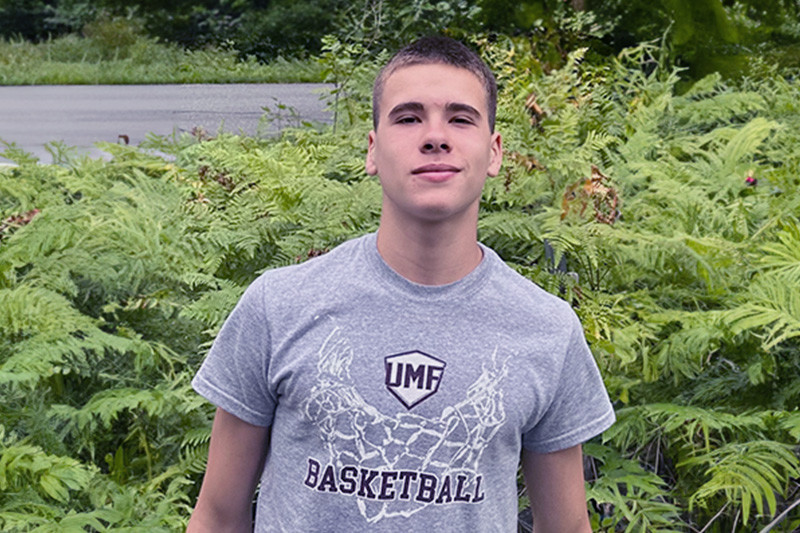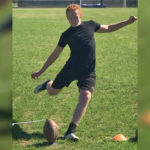My story of bouncing back from osteochondritis dissecans

Injuries suck — no better way of putting it. The physical pain is terrible on its own, but emotionally they can hurt even more. The frustration that comes with something that is out of your control is like nothing else. It makes you realize how much you take your health for granted until you lose something you love. That was my experience with basketball.
Early basketball success
Growing up, basketball was my life. Throughout my childhood, I played for hours a day. I was always shooting and dribbling and perfecting my skills. Even as a small kid, I was successful in the sport and had no problems with injury, always getting knocked down and springing right back up like nothing. That was until I started having elbow soreness.

I always assumed the soreness in my right elbow was a growing pain. I was just a young kid, and with all the basketball I did, a little soreness was expected. However, as I got older, my elbow just never seemed to get better. In 2018, my parents took me to an orthopedic facility in Maine. After a series of tests, the doctor there advised me to do physical therapy (PT) and take six weeks off from sports.
Osteochondritis dissecans of the elbow
But the pain continued. In early 2021, after dealing with ongoing elbow pain, I was diagnosed with osteochondritis dissecans (OCD) of the elbow — a small piece of bone in my elbow was cracked and unstable. (Fortunately, it hadn’t detached from the rest of the bone.) My parents brought me to Boston Children’s Hospital for a second opinion.
Osteochondritis dissecans (OCD) is a joint disorder in which a segment of bone and cartilage starts to separate from the rest of the bone after repeat stress or trauma. Most often, OCD develops in the knee, though it can occur in the elbow and other joints as well.
The day after my 16th birthday, Dr. Donald Bae, an upper extremity specialist, confirmed the diagnosis and recommended surgery. I was devastated, to say the least, that my first year of high school basketball would be taken away just like that.
After surgery, I worked hard to get my elbow strong again. I went to PT multiple times a week, didn’t lift anything heavier than a laptop with my right arm for six months, and worked on basketball skills that didn’t use my right arm.
Then, in June, I described pain I was having in both knees to an acupuncturist I was seeing for my elbow. He recommended that I see someone to rule out OCD. That’s when we returned to Boston Children’s.
OCD in both knees
I didn’t think I had much to worry about, but then I got news that I never could’ve expected. The X-rays showed OCD in both knees!
After more tests, Dr. Mininder Kocher, the chief of Sports Medicine who specializes in knee injuries, suggested surgery on both knees. The operations would be done separately, eight weeks apart, and then I’d face another long recovery. I was heartbroken. After all the time I’d put into getting healthy again, I was going to miss yet another season of basketball.
Thankfully I got support from another athlete who also had OCD in his knee. He helped me understand what to expect and gave me advice on how to recover as effectively as possible. About four months after my final surgery and a whole lot of PT (60 appointments in 2022), I was able to get back to training in basketball.

Bouncing back from injury: Tips for athletes
Although it took months of work to get back to health, the time honestly went by quicker than I thought it would. Here’s what I learned about recovery:
- Expect some soreness, even if you’re not in a lot of pain coming out of surgery.
- Focus on PT, proper nutrition, and sleep. It will make the healing process that much easier.
- Make sure to not overwork yourself while coming back from injury. As much as you want to jump back into activity at full speed, as I did, you are just going to hurt yourself more.
- Pay attention to your mental state, as that can be affected the worst throughout recovery. A positive mindset and keeping yourself busy with other hobbies is vital.
- If you need help, reach out for it. Doing this on your own isn’t easy or possible.
Moving forward
Re-injury prevention: Before he returned to basketball, Jace’s team in the Sports Medicine Division conducted several tests of his bone density, genetics, and running gait — all to make sure he could play with a low risk of injury.
It’s been a journey to get my body and skills back to where they were, but now my knees and elbow feel the best they ever have.
The biggest thing I took away from my surgeries is how they changed my appreciation for the things I love. I fell back in love with the game of basketball and gained mental toughness that I didn’t have before. Despite the setback injury causes, it can also set you forward and empower you with mental fortitude that will help you in many ways.
Learn more about the Hand and Orthopedic Upper Extremity Program and Sports Medicine Division.
Related Posts :
-

From Toronto to Boston: Osteochondritis dissecans, hockey, and hope
Hockey is a fast and physical sport. Players need to think and act quickly as their team members, opponents, and ...
-

Ryker's comeback from osteochondritis dissecans
When Ryker Casey takes the field, everything comes down to the strength of his legs and precision of his kick. ...
-

After two ACL tears, a skier reconnects with her body and her sport
The memory remains vivid in Sophia’s mind. Racing down a slalom course at top speed, she hit a patch ...
-

Sports injuries: Why ignoring pain is bad for athletes
“No guts, no glory.” “No pain, no gain.” “Rub some dirt in it.” Sports clichés like these encourage young ...





